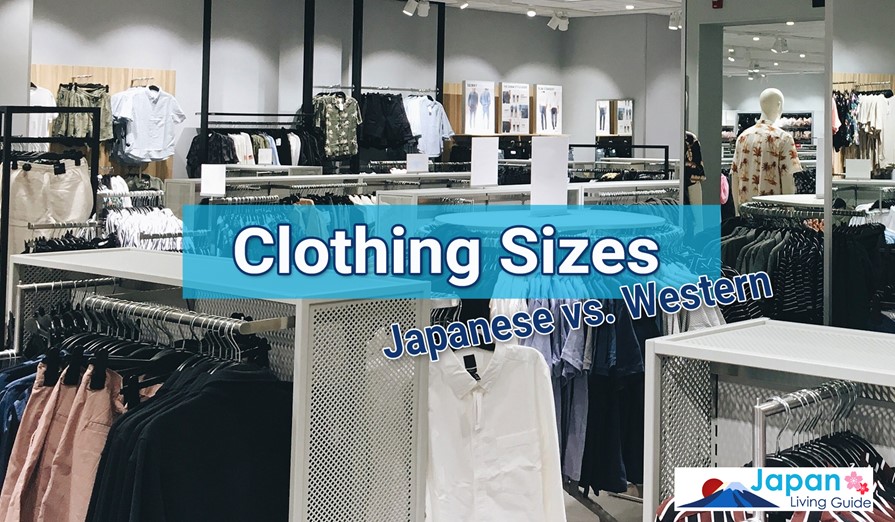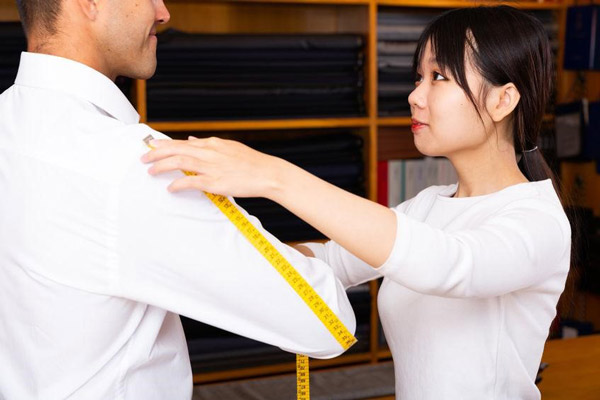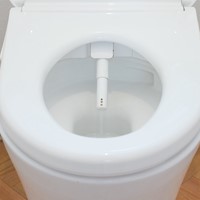Clothing Sizes - Japanese vs. Western Finding the Right Fit

Whether visiting a clothing store or buying online, there is an incredible range of fashion apparel to choose from in Japan. However, because Japan uses a different sizing system than most Western countries, shopping can be confusing at times. To make life a little easier, we’ve prepared a comprehensive comparison of Japan’s different clothing sizes.
Note: While we won’t be covering Japanese shoe sizes in this article, you can find comparison charts for women’s and men’s sizes here.
Jump to:
Differences Between Japanese and Western Clothing

Before getting into specific comparisons, let’s take a quick look at some important differences you are likely to encounter when shopping for clothes in Japan.
According to , on average, Japanese tend to be slimmer and shorter than their American and European counterparts. When it comes to shopping, most retailers tend to stock sizes that fit closer to the average Japanese person’s dimensions.
Smaller people who struggle to find adult-size clothing in country’s like the United States or Europe find that Japan is shopping heaven. Often, their problem is the opposite—being overwhelmed with options.
On the other hand, larger people have fewer options in Japan when finding apparel and footwear in sizes that fit them. However, Japan does have specialty stores that cater to the need for bigger sizes. Also, several major brands offer larger sizes online that are not stocked in their physical locations.
Finally, those with more extensive budgets may like to know that Japan is home to some of the world’s finest tailors.
Women’s Clothing Sizes
Dresses, Jackets, and Blouses
When it comes to women's sizes for items such as dresses, jackets, and blouses:
● U.S. sizes are typically five sizes larger.
For example, a U.S. size 4 would be a Japanese size 9.
● U.K. sizes are typically one size larger.
For example, a U.K. size 8 would be a Japanese size 9.
Women’s Clothing Sizes: Japanese vs. Western
| Japan | 3 | 5 | 7 | 9 | 11 | 13 | 15 | 17 | 19 |
|---|---|---|---|---|---|---|---|---|---|
| U.S. | 0 | 0 | 2 - 4 | 4 - 6 | 8 | 10 | 12 | 14 | 16 |
| U.K. | 4 | 6 | 8 | 10 | 12 | 14 | 16 | 18 | 20 |
| Italy | 36 | 38 | 40 | 42 | 44 | 46 | 48 | 50 | 52 |
| France | 32 | 34 | 36 | 38 | 40 | 42 | 44 | 46 | 48 |
| Northern Europe | 30 | 32 | 34 | 36 | 38 | 40 | 42 | 44 | 46 |
Women’s Pants and Tops
Pants sizes are generally labeled using waist measurements in centimeters (cm). For example, a 28-inch waist is 71 cm. However, sizes are sometimes measured in increments of two; thus, 71 cm would translate into 70 cm or 72 cm.
Some stores, however, use “small/S,” “medium/M,” and “large/L” for both pants and tops. These sizes can vary widely from store to store, but you should expect to go up at least one size when buying in Japan.
Bras
Bras in Japan are measured by cup and underbust (band) size. For cups, it’s best to go up one or two sizes. For example, a U.S. A cup becomes a Japanese B cup, a U.S. B cup becomes a Japanese C cup, etc.
Bra Cup Sizes: Japanese vs. Western
| Japan | A | B | C | D | E | F | G | H | I | J | K |
|---|---|---|---|---|---|---|---|---|---|---|---|
| U.S. | AA | A | B | C | D | DD | DDD | G | H | I | J |
| U.K. | AA | A | B | C | D | DD | E | F | FF | G | GG |
| Europe | AA | A | B | C | D | E | F | G | H | I | J |
To get the band size, take the underbust measurement with a measuring tape. A U.S. size 32 works out to be a Japanese size 70. A U.S. size 34 is a Japanese size 75, and so on.
Bras Band Sizes: Japanese vs. Western Sizes
| Japan & Europe (cm) | 65 | 70 | 75 | 80 | 85 | 90 | 95 | 100 | 105 |
|---|---|---|---|---|---|---|---|---|---|
| U.S. & UK (inches) | 30 | 32 | 34 | 36 | 38 | 40 | 42 | 44 | 46 |
Men’s Clothing Sizes
Men’s Shirts and Collars
A U.S. size 14 (inches) is the same as a Japanese size 36 (cm) for men’s shirts and collars. For each U.S. half-size, the Japanese size goes up by one. For example, a U.S. size 14.5 is a Japanese size 37, and a U.S. size 15 is a Japanese size 38.
Similarly, Japanese collar sizes increase by 1 for every 0.5 increase in Western collar sizes. Also, be aware that Japanese shirts tend to have a slimmer body and sleeves than their Western counterparts.
Men's Shirt and Collar Sizes: Japanese vs. Western
| Japan & Europe (cm) | 36 | 37 | 38 | 39 | 40 | 41 | 42 | 43 |
|---|---|---|---|---|---|---|---|---|
| U.S. & UK (inches) | 14.0 | 14.5 | 15.0 | 15.5 | 16.0 | 16.5 | 17.0 | 17.5 |
Men’s Coats and Suits

In Japan, Men’s coats and suits are generally labeled as small (S) through extra large (XL).
Men’s Coat and Suit Sizes: Japanese vs. Western
| Japan | Small | Medium | Large | Extra Large |
|---|---|---|---|---|
| U.S. & UK (inches) | 34 - 36 | 38 - 40 | 42 - 44 | 44 - 46 |
Please note that off-the-rack suits may have shorter legs. Conversely, they may come with extra fabric so that the store can adjust it to fit your length.
Men’s Pants
Pants sizes are measured by waist size. As such, you only need to convert inches to centimeters.
Men’s Japanese Pants Sizes (in centimeters)
| S | M | L | XL | XXL | XXXL | |
|---|---|---|---|---|---|---|
| Height | 155 - 165 | 165 - 175 | 175 - 185 | 175 - 185 | 175 - 185 | 175 - 185 |
| Waist | 68 - 76 | 76 - 84 | 84 - 92 | 84 - 92 | 84 - 92 | 108 - 116 |
| Chest | 80 - 88 | 88 - 96 | 96 - 104 | 100 - 108 | 108 - 116 | 108 - 116 |
Children’s Clothing Sizes
Japanese children’s clothing sizes are usually labeled by the height in centimeters. For example, size 60 is for infants who are 60 cm tall (typically up to 3 months in age). Please note that it may be necessary to size up depending on the height, weight, and chest size.
Japanese Baby Clothing Sizes
| 50 - 70 | 70 | 80 | 90 | 95 | |
|---|---|---|---|---|---|
| Age | 0 - 6mo. | 6 - 12mo. | 12mo. | 24mo. | 36mo. |
| Height | 60cm | 70cm | 80cm | 90cm | 95cm |
| Weight | 5kg | 9kg | 11kg | 13kg | 14kg |
Japanese Children’s Clothing Sizes
| 100 | 110 | 120 | 130 | 140 | 150 | |
|---|---|---|---|---|---|---|
| Age | 3 - 4yr | 5 - 6yr | 7 - 8yr | 9 - 10yr | 11 - 12yr | 13 - 14yr |
| Height | 95 - 100cm | 105 - 115cm | 115 - 125cm | 125 - 135cm | 135 - 145cm | 145 - 155cm |
| Chest | 49 - 55cm | 53 - 59cm | 57 - 63cm | 61 - 67cm | 64 - 72cm | 70 - 78cm |
Returning Clothing Purchases in Japan
What if you bought the wrong size or decided that you don’t like the color? Worry not, many clothing stores offer returns, though usually within a specific time frame, such as two weeks. You must also still have the receipt.
To start the return process, go up to the cashier or help counter with the clothing and receipt in hand, and say the following:
(Excuse me. Can I return this?)
すみません。これ、返品できますか?, or Sumimasen. Kore, henpin dekimasu ka?
If, for what ever reason, you’re stuck with a purchase you no longer want, we suggest making good use of it by donating it to those in need. To learn more about the ins and outs of shopping in Japan, be sure to check out all of our guides to get the most out of your money.

- Rental Apartments & Houses in Tokyo
- Listings of popular and luxurious rental apartments, condominiums, and houses designed with expats in mind.

- Apartments & Houses for Sale in Tokyo
- Listings of apartments, condominiums, and houses available for purchase in Tokyo.

















